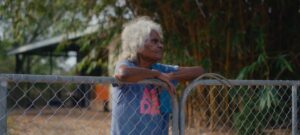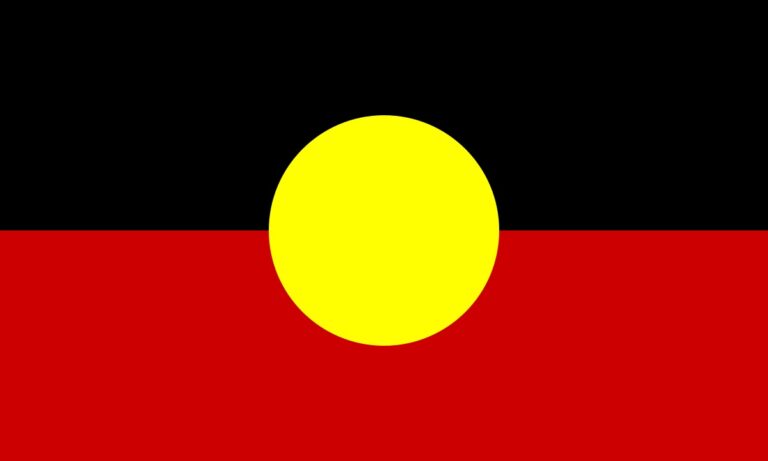Raised in Dubbo, first on a farm and then in a city, drinking culture was second nature for me. I started drinking at thirteen, and kept on through university. I should hold the typical “she’ll be ‘right” attitude to drinking that pervades Australian culture. Indeed, for the longest time, this would be a perfectly adequate description of my attitude to alcohol.
I am not a teetotal, by any means, nor am I some holier-than-thou health guru. However, I am a research scientist. I have an interest in alcohol, health, and human genetics. I also have an interest in plant genomics. When I began a job at the CSIRO, using artificial intelligence to breed better wheat varieties, these interests collided headlong.
In 2016, the top CSIRO award was granted to a project that made a gluten-free beer. This apparent scientific triumph had, ironically, been spun out of a genuine and effective public health program to make gluten-free cereal: an otherwise admirable goal that had been entirely derailed by management, who sold out gluten-free barley to a German beer company.
I was deeply disturbed to find that research aimed at developing new and better alcohol varieties, and generating more alcohol, received enormous support within the CSIRO. Coming from a medical science institute it was shocking to see how pro-alcohol research received such a grand endorsement, and taxpayer money, from a government body. I was even more disturbed to find that this was not considered new or even questionable behaviour.
Government scientists routinely attend conferences funded by brewing companies under the guise of barley research, with free alcohol (and other perks) supplied by those companies. This is actively encouraged, with travel paid by Australian taxes. Research to improve grape-vine yield is the subject of long-term funding, barley breeding for improved beer making is encouraged.
Senior members of staff personally developed mechanical grape harvesters: devices that catapulted cheap Australian wine into global markets, and single-handedly made $2-a-bottle wine and “goon sacks” a reality. In the face of internal opposition, these scientists spent public funds on projects that allowed the invention box wine: an invention that has killed innumerable people (and tastebuds), with shocking repercussions for vulnerable communities.
It remains to be seen what at-risk first nations communities, victims of domestic violence, victims of alcohol abuse or liver cancer sufferers, make of their tax money supporting the production of cheap alcohol.
And now, the CSIRO has just announced, with some fanfare, that it is spending 18 million dollars of public money to help the Wine Australia preserve Australia’s alcohol output, develop new wine varieties, and produce “wines with unique flavours”. Why this is a good use of taxpayer’s money, or a worthwhile scientific pursuit, is completely mystifying.
The CSIRO is a federal government agency. Like the Australian Taxation Office or the Lands Council, it has a mandate to serve the people of Australia. However, the activity of this government department stands directly at odds with the public good.
While at the CSIRO, I repeatedly requested evidence, any evidence, that pro-alcohol research was in the public or even economic interest of Australians. After three years of requests, the executive produced no evidence. Not one scientific paper, policy document, or costed estimate emerged from the executive of our premier scientific institution. Instead, I received back-channel responses. While many responses were positive, largely from unsackable senior fellows or secretive junior scientists, there was a popular suggestion that further questions on pro-alcohol research would lead to a short career.
Eventually, the executive admitted that alcohol killed millions of people and that there was no safe level of drinking but, remarkably, stated that pro-alcohol research would continue at CSIRO because it enjoyed a ‘social licence’ in Australia. Given that almost 60 per cent of Australians think the Australian government is not doing enough to combat the effects of alcohol, and that 80 per cent think not enough is being done to reduce alcohol-related harm, that seems a bizarre rationale.
Alcohol kills one out of every 22 Australians[i], and causes more overdose deaths than all illegal drugs combined[ii].
Internationally, the costs are higher. Australia grows a quarter of the world’s malting barley[iii] and is one of the world’s top-ten wine producers. If all units of alcohol are allocated an equal fraction of global deaths, this means that Australian barley kills over 271,000 people[1], and Australian wine kills around 13,900 people[2], every year. This is the equivalent of five and a half corpses per vineyard each year or, for farmers, one death for every eight and a half tons of malting barley sold.
The government and people of Australia do not even have the bad excuse of profitability for this death toll. Over 90 per cent of Australian beer and many Australian vineyards are foreign-owned, with profits flowing directly offshore. Just two foreign companies own 89.7 per cent of Australian beer, another own 18 per cent of Australian wine. British-owned Woolworths group own a further 119 predominately Australian wineries. However, even if these industry profits are included, the alcohol trade costs each Australian between $500-$2000 a year through ordinary bills, hospital bills, time off work, injuries, and deaths: costs that far outweigh any benefits from tourism or trade[iv][v].
For a scientific institution to ignore such overwhelming scientific evidence, in favour of an unfounded statement with no empirical support, is a stupefying decision.
While the CSIRO and Wine Australia attempt to generate more alcohol, other government departments are, ironically, spending billions of dollars trying to contain the downstream harm caused by this research.
Our health and justice departments, desperate to reduce the human cost of alcohol abuse, spend billions of dollars to contain the damage of alcohol. Social, family, community and emergency services are all overrun trying to contain the social fallout of drinking the abundant cheap grog developed at the CSIRO.
Incredibly, however, the Australian government also wastes considerable amounts of tax money in an effort to get Australians to drink more grog.
The Australian government enacted the Wine Australia Act 2013 to “promote the consumption and sale” of wine. Through this act, the tax money flows into Wine Australia, a government body that aims to “increase the demand for Australian wine… through targeted promotion and marketing activities”. In the absence of any discernible social or economic benefit to Australia, the federal government has just given Wine Australia an extra 50 million dollars for their marketing project.
These efforts raise an obvious question.
If alcohol is harming the public, which seems overwhelmingly true, why hand out tens of millions of taxpayer dollars for pro-alcohol research and marketing through Wine Australia and the CSIRO? In contrast, if alcohol has a net benefit to Australia, then why does our government dedicate well over a billion dollars of taxpayer funds to anti-alcohol initiatives through the health department?
Even to a self-confessed bogan from Dubbo, such as me, the use of
taxpayer money to fund both pro- and anti-alcohol initiatives makes no
sense[vi]. The
inherent contradiction is painfully obvious. As such, the diversion of taxpayer
money from meaningful research into pro-alcohol funding must end.
[1] 3.3 million global alcohol deaths per annum, multiplied by 0.343 (the fraction of all alcohol units provided by beer, p.47), multiplied by 0.24 (the fraction of malting barley produced by Australia), for 271,000 annual deaths. With deaths assigned equally over the 2.3 million tons of malting barley Australia produces on average, this equates to one death every 8.48 tons. This death rate is comprehensible if you image all the beer produced by 8.5 tons of barley being gradually filtered through human livers and kidneys. Malting barley used to make other alcohol such as malt whiskey and sh?ch?, and the corresponding deaths caused by these spirits, are excluded from this estimate.
[2]
3.3 million global alcohol deaths per annum, multiplied by 0.117 (the fraction
of all alcohol units provided by wine, p.47),
multiplied by 0.036 (the fraction
of global wine produced by Australia), for 13,899 annual deaths. Allocating
these deaths equally over the 135,000 hectares of vineyard in Australia
produces one death every 9.7 ha. Alternately, allocating deaths equally across
2468 vineyards equates to 5.6 deaths per year per vineyard: however, most
deaths are concentrated in the largest-volume, lowest-price producers. Fortified
wines and related spirits are excluded from this estimate.
[i] Author’s calculations based on: World Health Organization. (2018). Global status report on alcohol and health. Geneva. p.372.
[ii] Gao, C., Ogeil, R., Llloyd, B. (2014). Alcohol’s burden of disease in Australia. Canberra.
[iii] Ullrich SE. Barley: Production, Improvement, and Uses. 2011 DOI:10.1002/9780470958636.
[iv] Manning M, Smith C, Mazerolle P. The societal costs of alcohol misuse in Australia. Trends Issues Crime Crim Justice 2013; : 1–6.
[v] Lapsley H, Collins D. The costs of tobacco, alcohol and illicit drug abuse to Australian society in 2004/05. In: National Drug Strategy Monograph Series No. 64. Commonwealth of Australia, 2008: 143.
[vi] Newman SJ. Ending government support for pro-alcohol research. Lancet 2019; 393: 1200.







